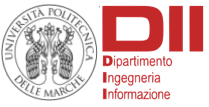The 4th Industrial Revolution (4IR) builds on the Internet-of-Things (IoT) paradigm, as it relies upon the scenario of having billions of interconnected autonomous mobile devices, with unprecedented processing power and storage capacity. The 4IR is a disrupting approach that will force companies in almost every domain to re-organize themselves in a more efficient way, by exploiting technological breakthroughs such us artificial intelligence, wireless communication and quantum computing. The integration of these emerging technologies into every day life requires efficient power supply solutions in computing, sensing, memory enlargement and human-machine interaction. One perceived bottleneck for 4IR is that in most situations, IoT devices/networks will be remotely deployed, so that maintenance may be either incovenient or impossible. In particular, this implies that IoT devices either have to embed energy sources consistent with their operative lifespan or that clean and renewable energy convertors, if working off-grid, must sit on board. The significant broadening of the wireless communication spectrum in Europe makes the Radio frequency (RF) energy scavenging a highly desirable way forward for clean powering of the nextgeneration IoT. NANO-EH has the ambitious vision of creating a pathway for translating forefront knowledge of unique high frequency properties of emerging classes of nanomaterials into advanced device engineering for scalable miniaturized energy harvesting/storage submodules that are tailored for the specific needs of stand-alone, mobile or portable uses. It surpasses the current paradigm of energy harvesting materials by developing non-toxic and rare earth/lead-free materials exhibiting CMOS-compatibility and scalability for low cost and large-scale manufacturing.

